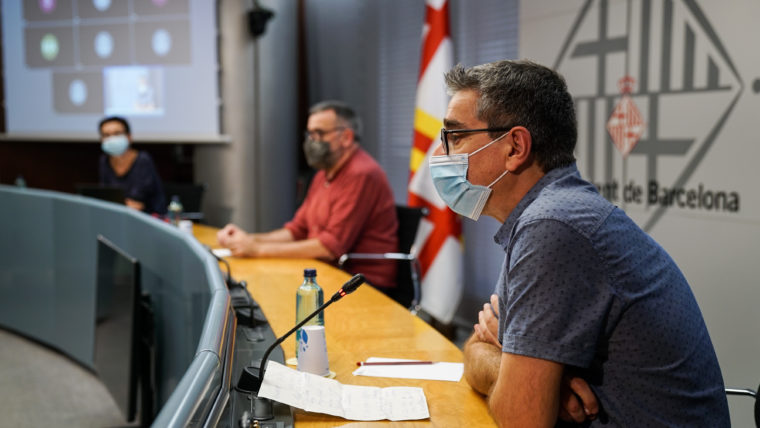Record number of inhabitants in Barcelona: 1,663,530 people
The city’s population has increased for the fifth year running to reach the highest number of people since 1990, with 1,663,530 inhabitants. This is the second biggest year-to-year increase in the last twelve years (after last year) in overall numbers (16,172 people) and in relative terms (0.98%). In addition, the number of people officially registered as residing in the city is also up in all districts: Ciutat Vella saw the biggest increase with 2.4%, while the smallest increase was in Les Corts, with 0.1%.
The data come from 1 January 2020 and the annual report by the Department for Statistics and Data Dissemination, affiliated to the Municipal Data Office, and from the analysis of the municipal register of inhabitants.
The report includes data from essential indicators on the personal characteristics of people on the register:
Sex, age, education and marriages
The demographic structure of the population on the register has the same characteristics as in recent years. Women account for 52.5% of the population. Males account for higher numbers among children, while women outnumber men in all age brackets from 24 upwards. Women are in the majority in all districts except for Ciutat Vella, where they represent 46.3% of the population.
By age, the figures show a record number of centenarians in the city: 863, of which 85.3% are women. This represents an increase of 10.8% compared to last year. In addition, life expectancy is also at an all-time high: 86.7 for women and 80.7 for men. The average age of the population remains stable at 44.
The level of education among the population continues to rise; 33.4% of residents over the age of 16 have a university qualification or a higher degree. This figure has gone from 23.9% to 33.4% in a decade, with women gaining more qualifications of this type than men.
Finally, another notable figure confirms a drop in the number of marriages after three years of increases.
Origin and nationality of the population
For the first time in the city’s recent history, more than half of Barcelona’s residents were born somewhere else (50.7%). Of these, 27.8% were born in other countries, 15.7% in the rest of Spain and 7.2% in the rest of Catalonia. Of the 463,857 Barcelona inhabitants born abroad, 27.6% have Spanish citizenship. The main countries of origin for this section of the population are Argentina, Peru and Colombia.
The population of foreign nationals continues to rise and now represents 21.6% of the total, with 179 different nationalities represented. The figure of 360,970 people is the highest ever, with nearly half having lived in the city between one and five years and 24.6% having arrived in the last year.
In contrast to last year, the biggest growth in this area is in the number of foreign nationals from non-EU countries (9.6%), while EU citizens dropped from 12.3% last year to 5.2%. EU citizens currently represent 30% of the total number of foreign nationals.
The highest numbers of foreign nationals come from Europe and America, with people from Italy, China and Pakistan numbering more than 20,000 in each case. These are followed by France, Morocco, Colombia, Honduras, Venezuela and Peru, with more than 10,000 each. Over the course of 2020, the highest numbers of people getting onto the city register were from Italy (3,587), Colombia (2,925), Venezuela (2,888), Honduras (2,396), Pakistan (2,106) and Peru (1,841).
Homes in the city
There are 664,476 homes in the city, with an average of 2.51 householders in each one, representing a slight rise compared to 2019. There are more households with no men (24.8%) than there are with no women (14.9%). Households with just one person living in them number 205,394, representing 30.9%. Households with two people account for 29.2%, with three people 18.4%, with four people 13.6% and with five or more people 7.9%.
Demographic movement in 2019
Last year saw 12,560 registered births and 14,401 registered deaths. Despite a more moderate change in the figures for last year, the downward trend in births means the 2019 figure is the lowest in the last twenty years, the birth rate standing at 7.7%.
In terms of the most popular names, these remain the same but with a few variations in their order:
- Girls: Júlia/Julia, Emma, Martina, Sofia/Sofía, Ona and Aina.
- Boys: Marc, Jan, Àlex/Álex, Leo and Lucas.
Some 6,390 people changed their nationality in 2019, with 89% acquiring Spanish citizenship. The average age of people changing their nationality is 30.5, two and a half years older than the previous year.








